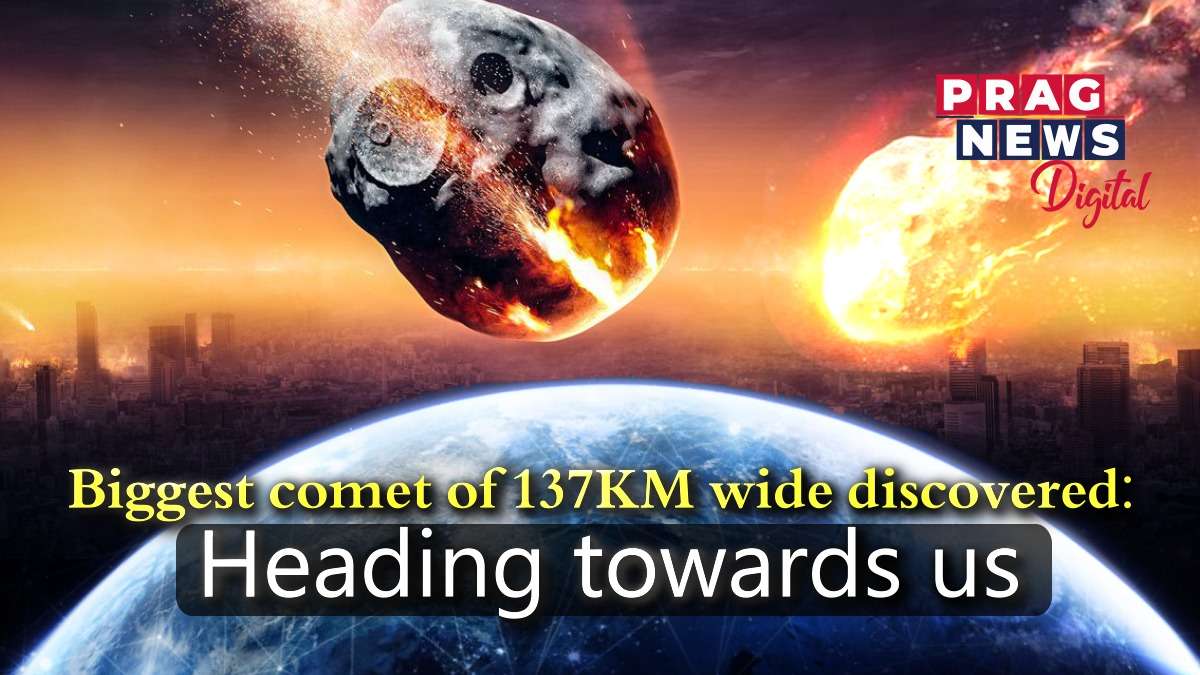Digital Desk: In human history ever, astronomers have discovered the biggest comet called the Bernardinelli-Bernstein comet hurtling through the solar system.
Bernardinelli-Bernstein, also known as C/2014 UN271, was discovered in 2014, hence the first part of its name. C/2014 UN271 has been confirmed as the biggest comet ever spotted by a team of experts from the Paris Observatory and the Instituto de Astrofisica de Andaluca-CSIC.
It was discovered during the Dark Energy Survey's quest for solar system entities. At the time, researchers determined that it formed in the Oort Cloud.
The Bernardinelli-Bernstein was still as far away as Neptune at the time, and astronomers had no thought how giant it was.
As it got nearer seven years later, it evolved clear that it was bigger than most comets. It was calculated to be between 100 and 370 kilometers across by researchers.
Also Read: UP Election Phase 1: Voting begins on 58 seats in 11 districts
The researchers analyzed the wavelengths of light reflecting off the comet utilizing data from the Atacama Large Millimeter Array to understand its measure (most different sizes of comet size have involved calculating how much of the sky they conceal).
The researchers focused on the comet's microwave radiation wavelengths not defined by the comet's dust, marking that the comparative brightness of the wavelengths mirrored from the comet was relatively typical.
According to their calculations, this had to be approximately 137 kilometres across to mirror so much light, setting it in the minor planet classification. The prior record-holder was Hale-Bopp, which counted approximately 74 kilometres in diameter.
The researchers even noted that the size of C/2014 UN271's review (albedo) was the most outlying measure of a comet's reflectance (albedo) ever created. They point out that catching a comet in such a space permits researchers to calculate its size agreeably as it forfeits ice as it approaches the sun. They expect it to be half the size when it starts its return journey.
While this comet will not pass close enough to give us a nice view, the last one that came by did. In December, Comet Leonard flew by us at a distance of a million miles before heading closer to the Sun. As it approached our Sun, this comet put on quite a show, and was even photographed zipping by the Solar Orbiter satellite of the ESA and NASA with a dazzling tail of gas and ice emissions.

Leave A Comment